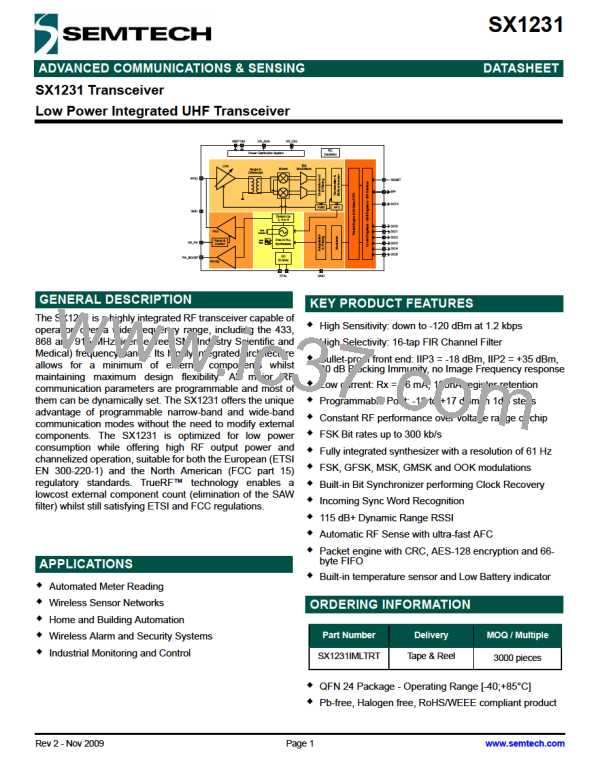SX1231
ADVANCED COMMUNICATIONS & SENSING
DATASHEET
4.2.1. Transmitter Startup Time
The transmitter wake-up time, TS_TR, is given by the sequence controlled by the digital part. It is a pure digital delay which
depends on the bit rate and the ramp-up time. In FSK mode, this time can be derived from the following equation.
1
TS _TR = 5μs +1.25× PaRamp + ×Tbit
2
,
where PaRamp is the ramp-up time programmed in RegPaRamp and Tbit is the bit time.
In OOK mode, this equation can be simplified to the following:
1
TS _TR = 5μs + ×Tbit
2
Tx startup request
(sequencer or user)
TS_TR
1.25 x PaRamp
Analog
group delay
XO Started and PLL is locked
0.5 x Tbit
(only in FSK
mode)
Transmission of Packet
5 us
ModeReady
TxReady
Figure 14. Tx Startup, FSK and OOK
4.2.2. Tx Start Procedure
As described in the former section, ModeReady and TxReady interrupts warn the uC that the transmitter is ready to
transmit data
In Continuous mode, the preamble bits preceding the payload can be applied on the DIO2/DATA pin immediately after
any of these interrupts have fired. The DCLK signal, activated on pin DIO1/DCLK can also be used to start toggling the
DATA pin, as described on Figure 27.
In Packet mode, the SX1231 will automatically modulate the RF signal with preamble bytes as soon as TxReady or
ModeReady happen. The actual packet transmission (starting with the number of preambles specified in PreambleSize)
will start when the TxStartCondition is fulfilled.
4.2.3. Receiver Startup Time
It is highly recommended to use the built-in sequencer of the SX1231, to optimize the delays when setting the chip in
receive mode. It guarantees the shortest startup times, hence the lowest possible energy usage, for battery operated
systems.
The startup times of the receiver can be calculated from the following:
Rev 2 - Nov 2009
Page 34
www.semtech.com

 SEMTECH [ SEMTECH CORPORATION ]
SEMTECH [ SEMTECH CORPORATION ]